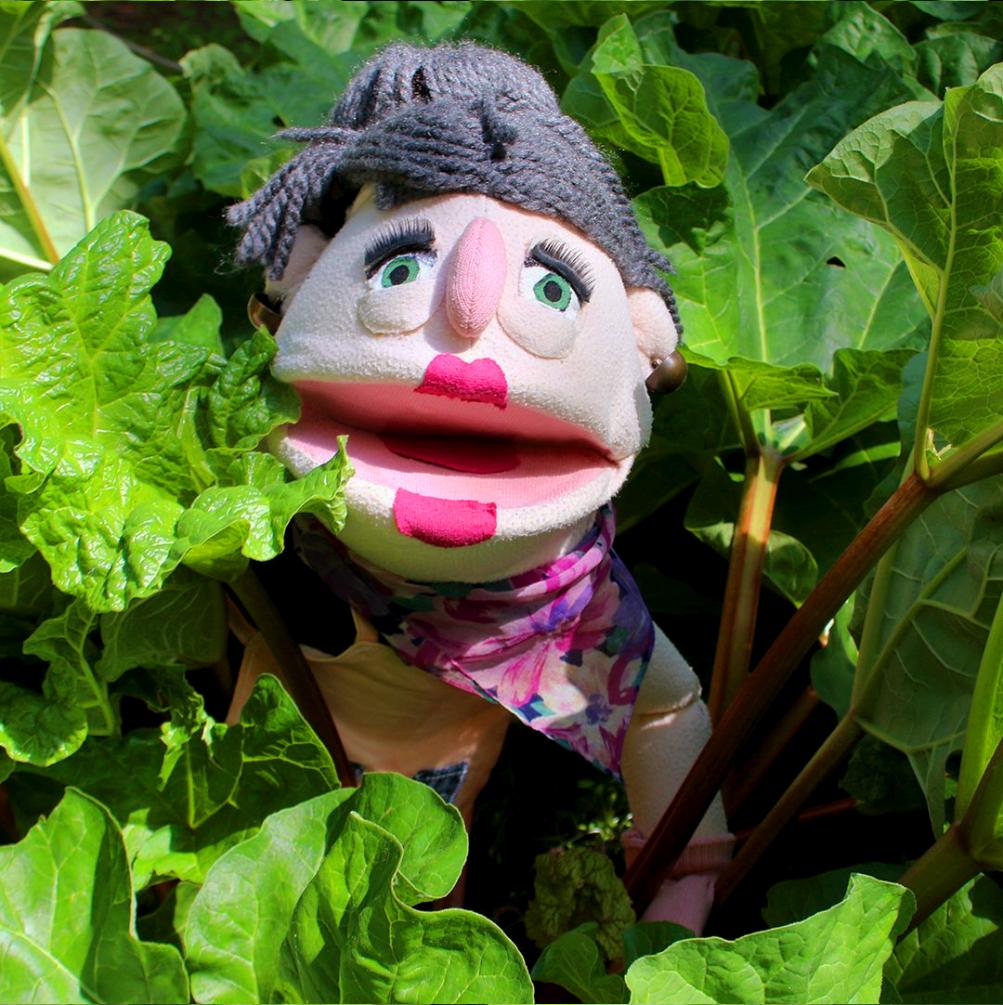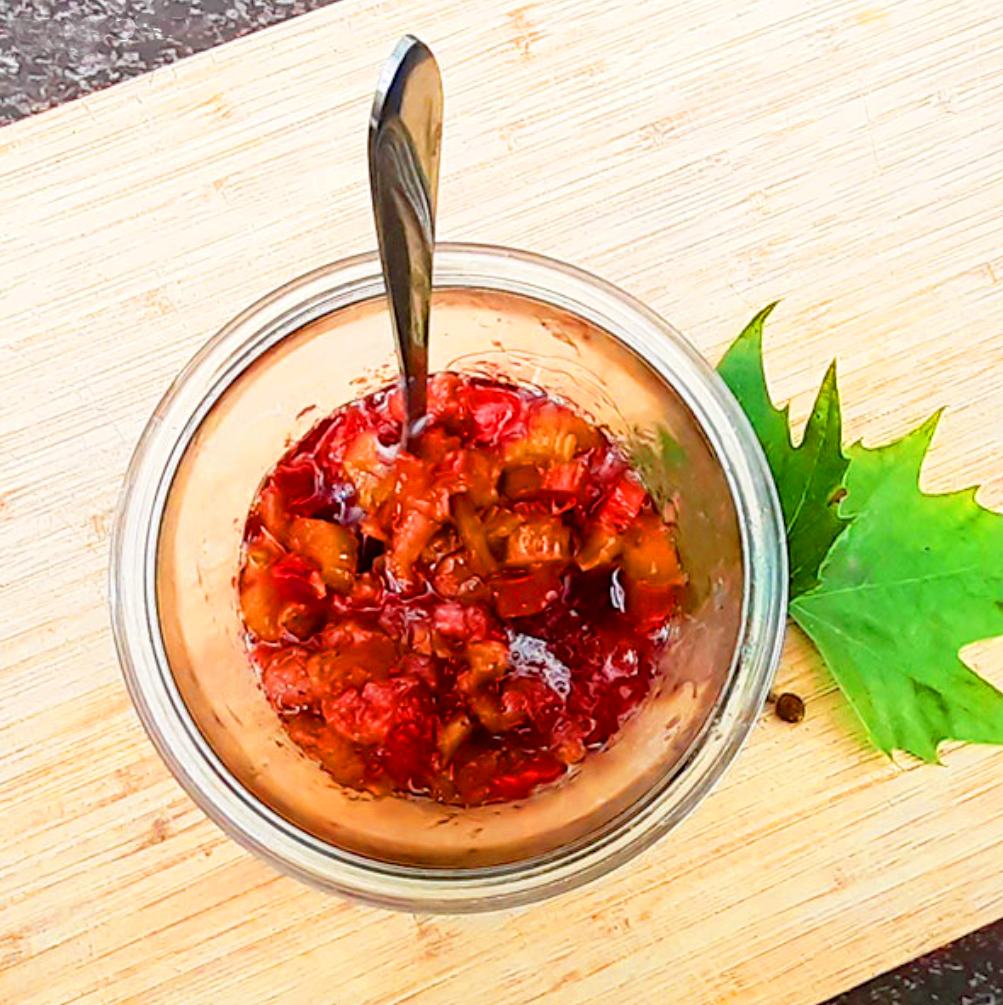🌱🍵🤔 Did you know that rhubarb stalks can also be dehydrated and infused with fruit juice? Although rhubarb is a vegetable, a member of the buckwheat family, it is often put to the same culinary uses as fruits. The skin of rhubarb stalks is edible and it softens during cooking. All of us can act at home to reduce our waste and every single one counts. Make jam, not waste!
🌼 Springtime couldn’t exist without delicious rhubarb stalks, renowned for their sour taste and thick, pink/red/greenish stalks. Grandma Sita loves picking rhubarbs from her garden!
💪 Rhubarb is a rich source of nutrients providing 45% of the daily value for Vitamin K in a serving size of 1 cup. It is also high in fiber providing similar amounts as oranges, apples, or celery.
👩🍳 The leaf stalks have a crisp texture similar to celery and can be eaten raw, added to savory dishes, or pickled. Although most commonly stewed, poached, or roasted to make delicious desserts like crumbles, pies, jam, or Grandma Sita’s simple recipe for plant-based rhubarb compote.


👵💚 Grandma Sita’s tips:
*Although by midsummer, stalks tend to be tough and fibrous. You might need to peel them to make them tasty and peels can be composted a great way to dispose of them while helping the planet.
*To store in the fridge keep the leaves on until you are ready to use as this helps to keep the rhubarb fresh. You can freeze rhubarb raw, blanched, or fully cooked.
*Carrot is safe to eat with the skin, as long as it is thoroughly washed. Certainly, there is no waste in carrots.
*The best way to keep carrots fresh is by storing them inside a container in the crisper of your fridge.
🚫 Keep in mind that rhubarb leaves are highly toxic and are not safe to eat for both humans and animals. Although you can compost them, no problem!
📗 It wasn’t until the 18th century when sugar became cheap and readily available, that rhubarb became a popular food. Before that, it was mainly used medicinally.
🌎 Eating local and seasonal fruit and vegetables helps to reduce food waste, saves resources, improves food quality and healthy habits, and boosts the local economy. Happy springtime!